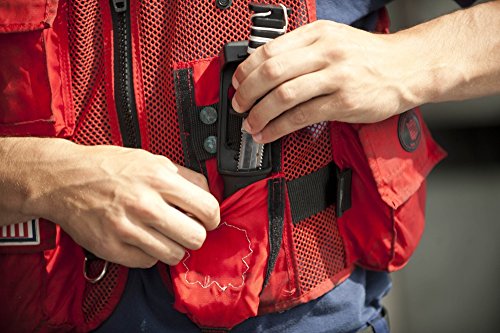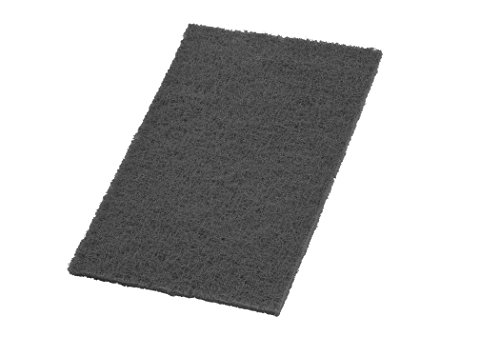(This site is reader-supported. When you buy something using retail links on our articles, we may earn a small commission. As an Amazon Associate I earn from qualifying purchases.)
Titanium knives represent a higher-end alternative to classic knives. They are lightweight and can resist corrosion, but they will also last for ages. Whether it comes to a folding knife, a hunting knife, or a top-notch chef knife, titanium will certainly make the difference. But then, nothing is perfect; titanium knives are no exception either.
Titanium knives may come with prolific blades, but they cannot get the type of edge tempered steel brings in. In other words, just like other materials, titanium can go dull after too many uses. Most sharpeners are designed for other metals. However, it can be done and the results could be astonishing.
Is it worth going with titanium?
Titanium has both pros and cons. It can be soaked in saltwater for years and it will not show any signs of corrosion. Hence divers prefer them. It is also lightweight, so it makes an excellent choice for hunters and fishermen. Titanium is harder too. Hence chances are slim to ding or dent during use or storage.
Most manufacturers advertise their titanium knives to be maintenance-free. Some knives feature a full tang design, which provides an even more solid feel. They are not magnetic and even if you get titanium alloy, it will have tiny amounts of iron, which is alright.
They do have a few drawbacks as well. First, they are expensive. Although it is harder, it is more brittle than steel. Titanium knives don’t hold a sharp edge for a long time and require frequent sharpening, unlike steel knives.
Using a classic sharpener for titanium knives could damage the blade. You will also be surprised to realize that the blade may not necessarily recover its edge and sharpness.
Problems associated with sharpening titanium blades
Titanium blades are certainly an upgrade to classic knives, but it depends on what you need such a knife for, as well as how you plan to look after it. Maintenance is insignificant – almost none at all. However, sharpening could be an issue after a while. There are loads of options out there – home-based options like scissors, ceramics, whetstones, and various other stones. While they may work, they have serious downsides.
Titanium blades are likely to gum up stones. As a direct consequence, the stone may end up with swarf. You will no longer be able to use it to sharpen other knives in the future, as chances are you will damage them. Scissors could be quite dangerous and primitive – just like ceramics.
Titanium knife sharpeners
There are three ways we prefer to sharpen a titanium knife.
- By using sandpapers
- By using abrasive pads
- By a diamond rod
How to sharpen a titanium knife with sandpapers
Get a pack of wet/dry silicon carbide paper. Take the paper and cut off a piece, lay a sheet of it on a block of soft pine and work the edges at an angle less than 30 degrees (generally) with little pressure on the blade and plenty of water.
You could start at 300. If you want you can work your way up to 1200 grit. But you better off keeping a micro-serrated edge as Titanium cuts better with a toothy edge in our opinion. You will have to play around with the grits to see what you like.
Try to keep the burr to a minimum, they are tough to remove. Never use a leather strop to remove a Titanium burr, it will contaminate the strop. You can use an ultra-light pass on the paper to remove the burr instead.
You can take some pointers from the video given below as well.
How to sharpen a titanium knife with an abrasive pad
An abrasive pad is one of the easiest ways to sharpen a titanium knife. In fact, if you choose to give it up and go to the farmer’s market for an easy fix, chances are you will see someone using an abrasive pad on your knife. It does not have to be a large pad. Anything around 10×5 inches will do, yet it depends on how large your knife is too. If you have a tiny fillet knife, you could easily do with a smaller pad.
Get the knife and put it on the pad. It should go on its edge at a relatively low angle – anything under 30 degrees. The lower the angle, the sharper your blade will be, but you will also have to do more work. Try to maintain the same angle throughout the entire procedure. Stroke the knife across this pad towards you. Make sure the blade slides from the beginning to the end – start closer to the handle and finish by the tip.
You have to go slow. Otherwise, the angle will change, and sharpening the knife will take ages. Instead, repeat it in a steady way about five times. Flip it on the other side and perform the same operation for five times. You can also alternate – one slide on each side. Choose whatever is easy for you.
A titanium knife in good condition will require about five strokes on each side. The more damaged it is, the more work you will have to do. You can use it on your forearm every five strokes – try shaving your hair and see if it works. All in all, the best part about this sharpening method is its safety. Simply put, the blade does not go towards your fingers or other parts, so you are less likely to get injured.
How to sharpen a titanium knife with a diamond rod knife sharpener
You can easily find diamond rod knife sharpeners. They are cheap as well.
To sharpen the edge, you will have to include the sharpener at a comfortable angle, then slide it across the blade. You can slide the sharpener or the knife – whatever is easier for you. If you think sliding both in different directions will be better, you are wrong. You will not be able to maintain the angle, so you will give yourself even more headaches.
The movement must be slow and steady. Maintain the angle (less than 30 degrees generally) and avoid putting too much pressure on it. Perform the same number of movements on each side of the blade. Ideally, you should go for five moves on each side.
It is worth noting that serrated titanium blades are more efficient and can cut effectively even if the blade is a bit dull. Straight blades are not that efficient. But then, serrated blades are harder to deal with.
Tips and tricks on how to sharpen a titanium knife
- As a general rule of thumb, the sharpening angle goes between 22 and 45 degrees. It depends on how sharp you want the knife to be – lower is sharper and requires more work. Check our sharpening angle guide for more details
- Get some cut resistant gloves from a hardware store if you have never sharpened knives before.
- No matter what angle you choose for the knife, maintain it throughout the entire sharpening operation.
- Never use an electric sharpener for titanium knives.
- Dealing with serrated edges is a bit more complicated and time consuming. Be patient.
Final words
You can either opt for a diamond rod titanium knife sharpener, sandpaper or an abrasive pad. There is also the easier and more expensive option – going to the farmer’s market and reaching to someone with experience. Chances are they will use the same tools, only they have the time and experience to do it in no time.

Hi, I am Jay. I am the creator of Knife Guides, your one-stop site for everything related to knives. I am a computer engineer by profession, knife aficionado by passion. Here I work with a group of people who’ve always had a passion for knives and blades. Over the years we’ve kind of become experts and decided to share our knowledge and ideas. I am also an avid hiker and enjoy offshore gamefishing.





